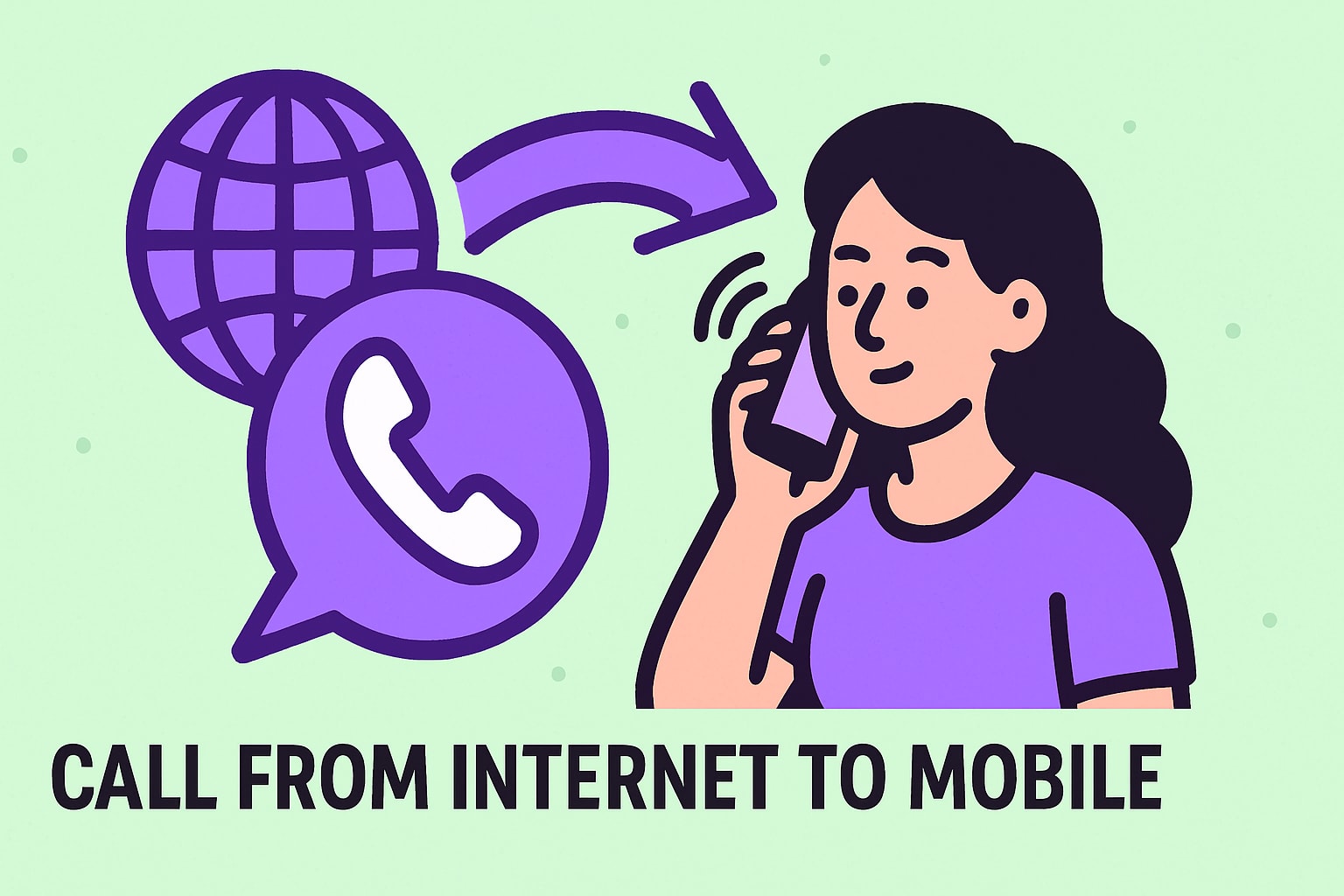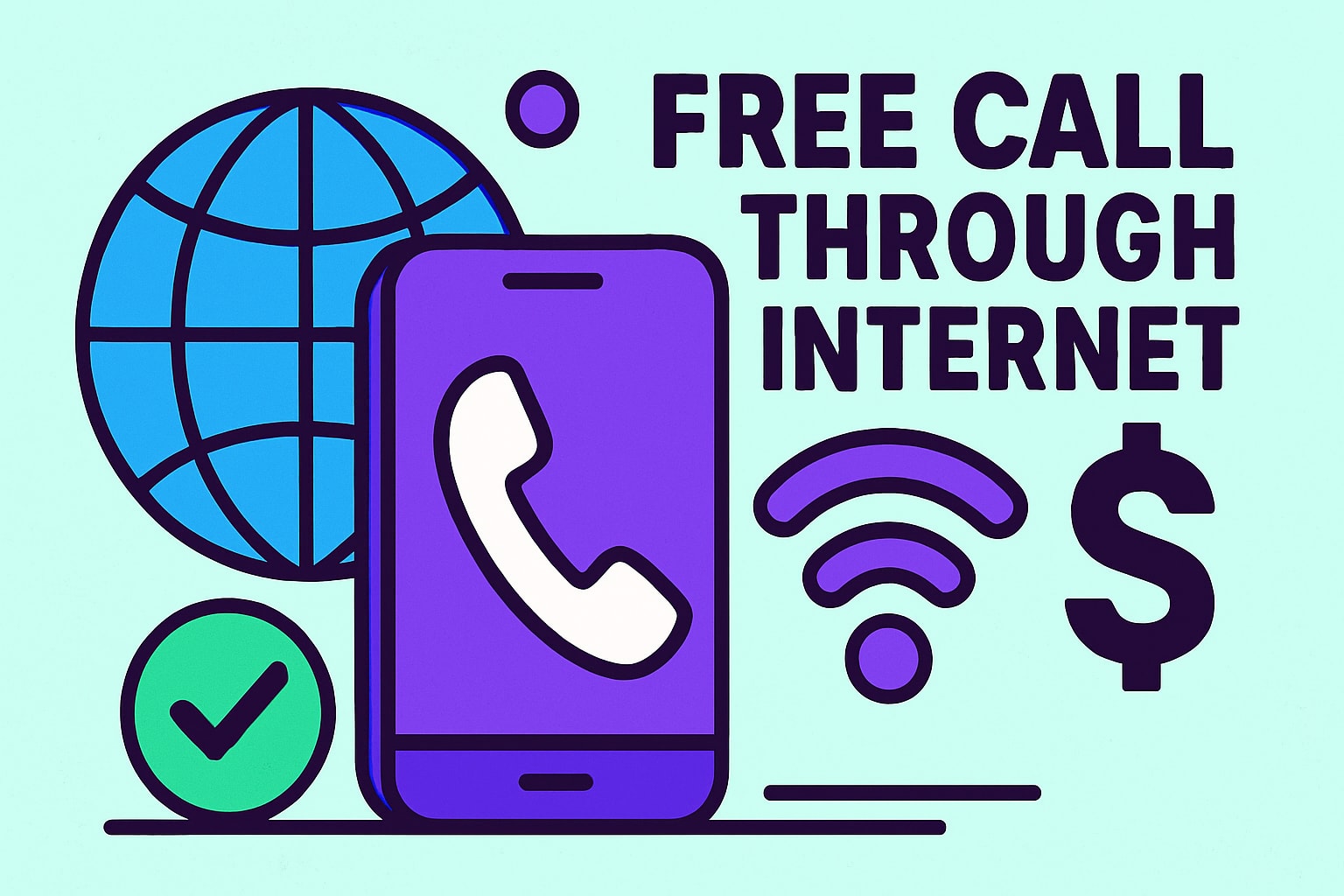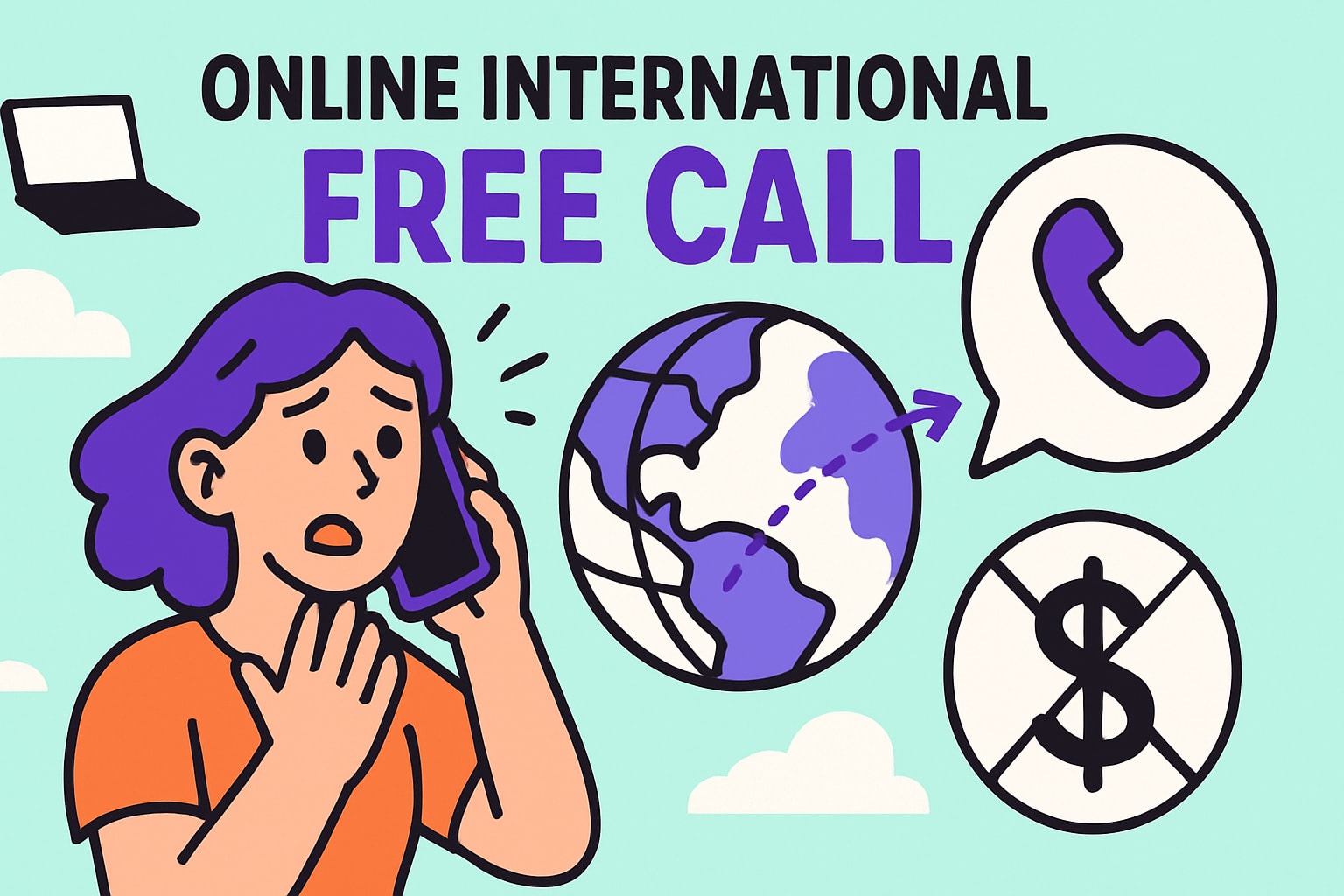Are you finding it difficult to keep in touch with family, friends, or business partners overseas in 2025? You are not alone. The way we communicate across borders is changing faster than ever.
This essential guide will show you how to make overseas call using the latest methods, from traditional phone lines to cutting-edge digital tools. We will cover simple step-by-step instructions, compare the top apps and services, break down costs, and explore what the future holds.
Ready for hassle-free, affordable international communication? Dive in and discover practical tips to connect with anyone, anywhere in the world.
Understanding Overseas Calling in 2025
International communication has come a long way, and the way people make overseas call today is vastly different from just a decade ago. In 2025, the landscape of international calling is shaped by rapid technological change, global connectivity, and evolving user needs. Understanding these changes is essential for anyone looking to make overseas call easily, efficiently, and affordably.

The Evolution of International Calling
The journey to make overseas call started with operator-assisted landlines, where connecting internationally was a luxury. Over time, technology shifted from analog landlines to digital platforms, making it easier and cheaper to connect globally. The introduction of Voice over Internet Protocol (VoIP) revolutionized the process, allowing calls to travel over the internet rather than traditional phone networks.
With the rollout of 5G and widespread fiber internet, call quality and accessibility have improved significantly. This has enabled more people to make overseas call with high-definition audio and minimal delay. In fact, global smartphone adoption is expected to reach 6.9 billion users by 2025, according to Global smartphone users projected for 2025. The rise of browser-based, app-free solutions has further simplified the process, letting users call internationally without needing to download anything. Traditional carrier usage continues to decline, with a 20% year-over-year drop in 2023, highlighting the shift toward digital-first communication.
Key Terminology Explained
Understanding the core terms is crucial if you want to make overseas call confidently. Here are some essential definitions:
| Term | Definition |
|---|---|
| VoIP | Voice over Internet Protocol, enabling calls via the internet |
| PSTN | Public Switched Telephone Network, the traditional phone system |
| Virtual Number | A number not tied to a specific phone line, used for flexible calling |
| SIM-less Calling | Placing calls without a physical SIM card, often via apps or browsers |
When you make overseas call, you need to know about call routing and international dialing codes. Call routing determines how your call travels from your device to the recipient. Dialing codes include the exit code (to leave your country), the country code (destination country), and area/local numbers.
There is a distinction between inbound and outbound international calls. Inbound calls are received from abroad, while outbound calls are made to other countries. Caller ID and privacy are also important, as modern services allow you to control how your number appears and protect your identity.
Why People Make Overseas Calls Today
The reasons people make overseas call have expanded with the digital age. On a personal level, individuals connect with family and friends, manage long-distance relationships, and handle travel emergencies. For business, international calls are vital for remote teams, client meetings, and global customer support. Official reasons include contacting embassies, banks, or government agencies while abroad.
A recent study shows that 40% of expats make overseas call at least once a month, highlighting the ongoing importance of international communication for staying connected. The convenience and affordability of modern solutions ensure that personal and professional needs can be met, no matter where you are in the world.
Step-by-Step: How to Make an Overseas Call in 2025
Connecting with someone abroad is now more accessible than ever, but the process still requires careful attention to detail. Whether you are reaching out for business, family, or emergencies, following these steps ensures your attempt to make overseas call is smooth, reliable, and cost-effective.

1. Choose Your Calling Method
The first decision in your journey to make overseas call is selecting the best method for your needs. In 2025, options have expanded far beyond traditional landlines. You can use:
- Landline or mobile: Reliable, but often expensive due to international fees and roaming.
- VoIP apps: Services like WhatsApp, Skype, and Viber offer low-cost or free calls over the internet.
- Browser-based solutions: No downloads required, accessible instantly on any device.
Here’s a quick comparison:
| Method | Cost | Setup | Devices | Notes |
|---|---|---|---|---|
| Landline/Mobile | High | Simple | Phone only | Roaming charges apply |
| VoIP App | Low/Free | Download app | Phone, PC, Tablet | Needs internet & app |
| Browser-Based | Very low | None | Any with browser | No installation needed |
Modern browser-based platforms, such as those described in How to call internationally online, let you make overseas call from anywhere without an app or SIM. This is especially useful for travelers and digital nomads.
2. Prepare for the Call
Once you have chosen your method, preparation is essential to ensure your make overseas call attempt succeeds. Start by checking your internet or cellular signal. VoIP and browser calls require stable, high-speed connections to prevent dropped calls and poor audio.
Gather all necessary details:
- Full international number (country code, area code, local number)
- Local and international dialing codes
- Recipient’s time zone
Scheduling your call at a convenient time for both parties is crucial. Tools like WorldTimeBuddy can help you avoid calling in the middle of the night. Double-check the number format and confirm your method supports calls to the destination country. By carefully preparing, you greatly increase the chance your make overseas call will go through without issues.
3. Dialing the Number Correctly
Dialing formats can be confusing, but following the right pattern is vital for any successful make overseas call. The standard format is:
Exit Code + Country Code + Area Code + Local Number
For example, to call India from the US:
011 91 XXXXXXXXXX
Common exit codes include 011 (US/Canada) and 00 (Europe). Mistakes to avoid:
- Leaving out the exit code
- Skipping the country code
- Entering extra or missing digits
If you are unsure about codes, consult official resources or your calling platform’s help section. Proper dialing ensures your make overseas call connects every time.
4. Troubleshooting Common Issues
Even with the right setup, issues can arise when you make overseas call. If your call does not connect, check:
- Number format and codes
- Internet/network strength
- Regional restrictions (some countries block VoIP)
Audio issues often stem from poor bandwidth or outdated app versions. If VoIP is blocked (as in UAE), consider using a VPN. For blocked numbers or country restrictions, contact your provider for solutions.
Quick troubleshooting steps help you resolve problems quickly, so you can make overseas call without unnecessary delays or stress.
5. Recording, Transcribing, and Managing Calls
Managing your communications is easier than ever when you make overseas call in 2025. Recording international calls may be subject to legal restrictions, so always obtain consent. Use built-in features or third-party tools for recording and AI transcription.
Organize call logs and contacts, especially for frequent international communication. Many platforms offer exportable logs, searchable contacts, and integration with business tools. These features streamline your workflow and ensure every make overseas call is logged, secure, and easy to reference.
Comparing International Calling Methods: Pros, Cons, and Costs
Navigating the options to make overseas call in 2025 can be overwhelming. With technology evolving rapidly, understanding the differences between traditional carriers, VoIP apps, and browser-based solutions is essential for choosing the right method.

Traditional Carriers vs. VoIP vs. Browser-Based Solutions
When you make overseas call, your choice of method impacts cost, convenience, and call quality.
Traditional carriers rely on landlines or mobile networks. They offer reliable connections, especially in areas with limited internet, but come with high per-minute rates and roaming fees. For example, a US-to-UK call can cost around $1.50 per minute.
VoIP apps such as WhatsApp, Skype, and Viber use the internet to transmit calls. They are popular for their low or even free rates, but require both parties to have the app installed and a stable internet connection. Privacy varies by platform, and some countries restrict VoIP usage.
Browser-based solutions allow you to make overseas call directly from your web browser. These platforms do not require downloads or SIM cards, making them ideal for travelers and business users. They offer instant access and competitive pay-as-you-go rates, often much lower than traditional carriers.
A comparison table can clarify key differences:
| Method | Cost | Reliability | Convenience | App Required |
|---|---|---|---|---|
| Traditional Carrier | High | High | Moderate | No |
| VoIP App | Low/Free | Variable | App-dependent | Yes |
| Browser-Based | Low | High | Very High | No |
Each method to make overseas call brings unique advantages and trade-offs.
Cost Breakdown and Hidden Fees
A critical factor when you make overseas call is understanding the true cost. Traditional carriers often charge high per-minute rates, plus connection fees and roaming surcharges. VoIP apps may advertise free calls, but charges can apply for app-to-phone calls or international numbers. Browser-based services typically offer transparent, pay-as-you-go pricing.
Hidden fees can include:
- Connection charges per call
- Monthly subscription traps
- Roaming charges for mobile calls
- International plan add-ons
To avoid surprises, always check up-to-date rates using tools like the International calling rates comparison page. This helps you compare costs across countries and providers before you make overseas call.
For example, Skype offers both subscriptions and pay-as-you-go options, while some carriers bundle international minutes at a premium. VoIP services often undercut traditional rates, with calls starting at just a few cents per minute.
Audio Quality, Reliability, and Security
Audio quality is a top concern when you make overseas call. Traditional carriers usually provide consistent quality, but at a premium. VoIP and browser-based calls depend heavily on your internet speed and stability. Issues like latency and dropped calls can occur on congested networks.
Security is another consideration. Many VoIP apps feature end-to-end encryption, protecting your conversations from interception. Traditional carrier calls are less likely to be encrypted. Browser-based platforms increasingly offer encrypted connections, enhancing privacy when you make overseas call.
Accessibility and Device Compatibility
The ability to make overseas call should not be limited by your device or location. Traditional carriers work on any phone, but may not support cross-platform features. VoIP apps require installation and may not be compatible with all operating systems.
Browser-based solutions excel in accessibility. They allow users to make overseas call from any device with a web browser, including public computers and tablets. No installation or registration is needed, making these platforms especially attractive for those needing flexibility and instant access.
In summary, choosing the best way to make overseas call in 2025 means weighing costs, quality, security, and convenience. The right method will depend on your needs, budget, and the level of flexibility you require.
Top Apps, Services, and Tools for Overseas Calls in 2025
Staying connected across borders has never been easier, thanks to the rapid evolution of digital communication tools. If you want to make overseas call in 2025, you have access to a range of apps, browser-based platforms, and advanced management tools. Choosing the right combination can ensure your calls are clear, affordable, and reliable.

Best Mobile Apps for International Calling
Mobile apps continue to lead the way for those looking to make overseas call with their smartphones. WhatsApp remains a top choice, offering free app-to-app calls with high-quality audio and end-to-end encryption. With over two billion users worldwide, it is ideal for personal and group conversations.
Skype is another reliable option, supporting both app-to-app and app-to-phone calls. Its subscription plans and business features appeal to professionals who frequently make overseas call. Viber stands out for its mix of free and paid international calls, plus robust privacy protections. FaceTime delivers high-quality video and audio for Apple users, while Google Voice provides affordable rates for those in the United States.
For those targeting specific destinations, such as India, step-by-step instructions and affordable rates can be found in this Cheap calls to India guide, making it easier than ever to make overseas call without breaking the bank.
Browser-Based and App-Free Solutions
A growing number of users now prefer to make overseas call directly from their web browsers. Browser-based platforms offer instant access, no downloads required, and seamless compatibility across devices. This approach is especially popular among digital nomads and travelers who value flexibility and convenience.
Browser-based solutions allow you to start a call from any computer or tablet, even public ones, simply by logging in. Many of these platforms provide pay-as-you-go pricing, transparent rates, and enhanced privacy controls, making them attractive for both personal and business users.
Adoption is rising, with more individuals seeking ways to make overseas call without relying on traditional apps. The simplicity of app-free platforms eliminates setup hassles, so you can focus on your conversation, not the technology.
Virtual Phone Numbers and Inbound Calling
Virtual phone numbers have transformed the way people make overseas call and receive calls from abroad. These numbers are not tied to a physical SIM card or location, enabling you to maintain a local presence in multiple countries.
Businesses frequently use virtual numbers to offer customer service lines in various regions. Travelers and expats benefit by receiving calls from home without expensive roaming charges. Privacy is another advantage, as you can share your virtual number instead of your primary one, reducing unwanted contacts.
Setting up a virtual number is straightforward and can be managed entirely online. For anyone needing to make overseas call regularly, this tool ensures you remain accessible wherever you are.
Tools for Managing International Contacts and Call Logs
Managing your international communications is essential when you frequently make overseas call. Contact management apps help you organize numbers, create groups, and sync details across devices. These tools streamline dialing and reduce the risk of mistakes.
Call recording and AI-powered transcription services are invaluable for keeping accurate records, especially for business calls or important discussions. Integration with CRM platforms allows businesses to link call data with client information, improving follow-up and customer service.
Efficient management tools not only enhance productivity but also ensure that every make overseas call is as effective as possible. With automated logs and searchable transcripts, you never miss important details.
Choosing the right mix of apps, browser-based solutions, and management tools empowers you to make overseas call efficiently in 2025. Evaluate your needs, explore the latest features, and take advantage of guides and resources to stay connected with confidence.
Tips to Save Money and Improve Call Quality
Saving money and ensuring clear connections when you make overseas call is easier than ever, thanks to modern technology and smarter strategies. Below, we share practical tips to help you cut costs, improve call quality, and avoid common mistakes—whether you are calling family or conducting international business.
Strategies to Reduce International Calling Costs
If you want to make overseas call without breaking the bank, smart choices are key. Always use WiFi or broadband instead of mobile data to avoid roaming charges. Opt for pay-as-you-go or subscription-free services, which let you pay only for what you use.
Compare rates across providers before each call. Many platforms have transparent calculators to estimate costs. Take advantage of free trials or first-call offers. For instance, switching from a traditional carrier to a VoIP provider can save users up to $50 per month. The VoIP market growth and adoption statistics show that more people are choosing these affordable options every year.
Maximizing Call Quality and Reliability
To make overseas call with the best audio quality, start with a high-bandwidth internet connection—fiber or strong WiFi is ideal. Use a wired headset or a quality microphone to reduce background noise.
Schedule calls during off-peak hours, when networks are less congested, for clearer conversations. Regularly update your apps and browsers to benefit from the latest security patches and performance improvements. According to recent studies, fiber internet can result in 25% fewer dropped calls than older connections.
Privacy, Security, and Legal Considerations
When you make overseas call, prioritize privacy and security. Choose services that offer end-to-end encryption to protect your conversations from eavesdropping. Always be aware of local laws regarding call recording; some countries require consent from all parties.
Avoid sharing sensitive information when using public or unsecured networks. For extra protection, use a VPN if you are calling from or to countries with internet restrictions. These steps help ensure your communication remains confidential and legally compliant.
Avoiding Common Pitfalls
To make overseas call successful every time, avoid hidden fees and auto-renewing subscriptions by reading the fine print. Double-check time zones and recipient availability to prevent missed connections or inconvenient calls.
Test any new service with a free call before relying on it for important conversations. Keeping organized contact lists and call logs can help streamline frequent international communications. By following these steps, you will consistently make overseas call with confidence and efficiency.
Future Trends: What’s Next for Overseas Calling?
The pace of change in how we make overseas call connections is accelerating every year. As we move toward 2030, rapid advances in technology, regulation, and global infrastructure are reshaping the way people and businesses communicate across borders. Let us explore the most important future trends that will define the overseas calling experience in the coming years.
AI, Automation, and Smart Calling Features
Artificial intelligence is revolutionizing the way we make overseas call communications. In 2025 and beyond, AI will offer real-time transcription and translation during international calls, breaking down language barriers instantly. Imagine speaking your native language, while your recipient hears a translated version in theirs.
Automation is also streamlining call scheduling and reminders. Smart assistants can now analyze your calendar, suggest optimal calling times based on both parties' time zones, and even initiate the call automatically. For example, this simple automation script can schedule a call:
if contact.timezone == 'Asia/Tokyo':
schedule_call('09:00', 'Tokyo time')
These smart features are making every make overseas call experience smoother, more productive, and more accessible for all users.
5G, Satellite Internet, and Next-Gen Connectivity
The rollout of 5G networks is a game changer for make overseas call quality. With higher bandwidth and ultra-low latency, 5G enables crystal-clear audio and uninterrupted video calls, even in crowded urban centers. This leap in connectivity means fewer dropped calls and better reliability.
Satellite internet, like Starlink, is making it possible to make overseas call connections from the most remote corners of the globe. Whether you are in a rural village or on a ship at sea, next-gen satellite coverage ensures you stay connected. By 2025, global coverage is expected to reach over 95% of populated areas, making the digital divide smaller than ever.
Integration with Business Tools and Remote Work
As more businesses operate globally, integration between overseas calling platforms and productivity tools is essential. In 2025, make overseas call services are merging with customer relationship management (CRM) systems, project management tools, and collaboration suites.
This integration allows for seamless workflows, such as logging calls automatically, transcribing conversations for records, and linking communication data with client profiles. With 70% of global businesses projected to use VoIP integrations (Gartner 2024), expect your next make overseas call to be smarter and more efficient than ever before.
Regulatory Changes and Global Accessibility
Telecom regulations are evolving to keep pace with digital innovation. Privacy and data protection standards are tightening, requiring overseas call providers to adopt stronger encryption and transparent data policies. At the same time, governments and organizations like the UN and ITU are working to bridge the global connectivity gap.
Efforts are underway to make overseas call services available to underserved regions, ensuring that everyone can participate in the digital economy. For those needing to check which countries are supported by leading services, consult the List of supported countries to stay informed about global coverage and dialing options.
Sustainability and Green Tech in Telecommunications
Environmental responsibility is becoming a core focus for telecom providers. Data centers are transitioning to renewable energy, and new protocols are reducing the energy required to make overseas call connections. Paperless billing and digital-only services are now standard, contributing to a 30% reduction in the carbon footprint of major telcos (GSMA 2023).
Consumers and businesses alike are seeking eco-friendly ways to make overseas call connections, prioritizing providers who demonstrate commitment to green technology and sustainable practices.
Predictions for 2030 and Beyond
Looking ahead, the way we make overseas call connections will be transformed by new technologies. Voice assistants will be able to place international calls with a single command. Universal language translation will enable truly borderless conversations.
We may soon experience fully immersive calls using augmented or virtual reality, bringing holographic meetings to life. According to recent prototypes, companies like Meta are already testing holographic international calls. The table below summarizes key predictions:
| Year | Technology | Impact on Overseas Calling |
|---|---|---|
| 2025 | AI Transcription | Real-time translation, accessibility |
| 2027 | 5G / Satellite | Near-universal global coverage |
| 2028 | AR/VR Calling | Immersive, lifelike interactions |
| 2030 | Voice Assistants | Seamless, hands-free calling |
The future holds exciting possibilities for anyone looking to make overseas call connections, with smarter, greener, and more accessible solutions on the horizon.
As we've explored, making international calls in 2025 is easier and more affordable than ever thanks to new browser-based solutions. You no longer need to worry about complicated downloads, expensive roaming charges, or juggling SIM cards—modern platforms let you connect worldwide in just a few clicks. If you're ready to experience clear, secure overseas calls with transparent pricing and instant access, why not try it out for yourself? With Yadaphone, your first call is free, and you can start right from your web browser, no strings attached. Make free call now





